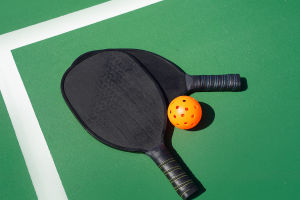Table tennis, a sport that originated in the late 19th century, may be small in size but is rich in cultural and historical significance.
Over time, this casual pastime evolved into an international sport, becoming one of the most popular competitive events in the world.
Table tennis serves not only as a competitive sport but also as a means of cultural exchange. This is particularly evident in China, where table tennis holds unique symbolic significance.
In the 1950s, it was employed as a bridge to improve China-US relations. The famous "Ping Pong Diplomacy" took place between China and the United States in 1971, when the U.S. table tennis team visited China.
This event marked the beginning of a new chapter in the relationship between the two countries. It transformed table tennis into a bond between China and the United States, while also propelling the sport onto the international stage.
On a technical level, the progress of table tennis is equally remarkable. Today, athletes rely not only on physical strength and speed but also on a combination of tactical prowess and psychological resilience.
The evolution of technology, particularly the use of spin serves, has made the game more complex and unpredictable. Spin can significantly affect the landing point and bounce of the ball, thereby influencing the opponent's response.
Modern table tennis players exhibit exceptional skill, allowing them to make quick judgments and necessary adjustments in the fast-paced environment of the game.
In addition to technical development, table tennis imposes strict psychological requirements on athletes. The high-pressure atmosphere of competitive play demands excellent psychological adjustment abilities and intense concentration.
Many top players engage in meditation and mental training before competitions to maintain optimal performance states. This focus on psychological training not only assists athletes in managing pressure during matches but also cultivates a positive mindset in their everyday lives.
Globally, table tennis has fostered a distinctive community culture. In different countries, the sport manifests diverse cultural expressions. For instance, Japan's approach to table tennis is celebrated for its precision and adherence to etiquette.
In Europe, various clubs provide a rich platform for enthusiasts to connect and share styles. This cultural diversity positions table tennis as not just a sport but also as a bridge for people around the world to communicate and learn from each other.
It is noteworthy that the sport's popularity has rendered it an important tool for education and social development. Many countries use table tennis as a community activity to encourage young people's engagement in physical exercise, fostering teamwork and self-confidence.
In some developing nations, table tennis serves as a means for youth to escape poverty and access new opportunities. Through training and competitions, many young individuals have discovered pathways to a brighter future.
With advancements in technology, table tennis training and competitions have gradually integrated high-tech elements. The application of smart sensors and data analysis enables coaches and athletes to better understand their technical strengths and weaknesses.
For example, by analyzing match videos, players can identify their opponents’ vulnerabilities and devise appropriate strategies. This data-driven approach is revolutionizing the training methodologies in table tennis, allowing athletes to elevate their competitive standards.
As a unique and captivating sport, table tennis transcends simple competition to become an essential vehicle for cultural exchange and social development.
Its allure lies not only in the confrontations on the court but also in the rich meanings it embodies and the connections it fosters between individuals. Moving forward, table tennis is poised to continue its global prominence, serving as a bridge that unites different cultures and communities.


